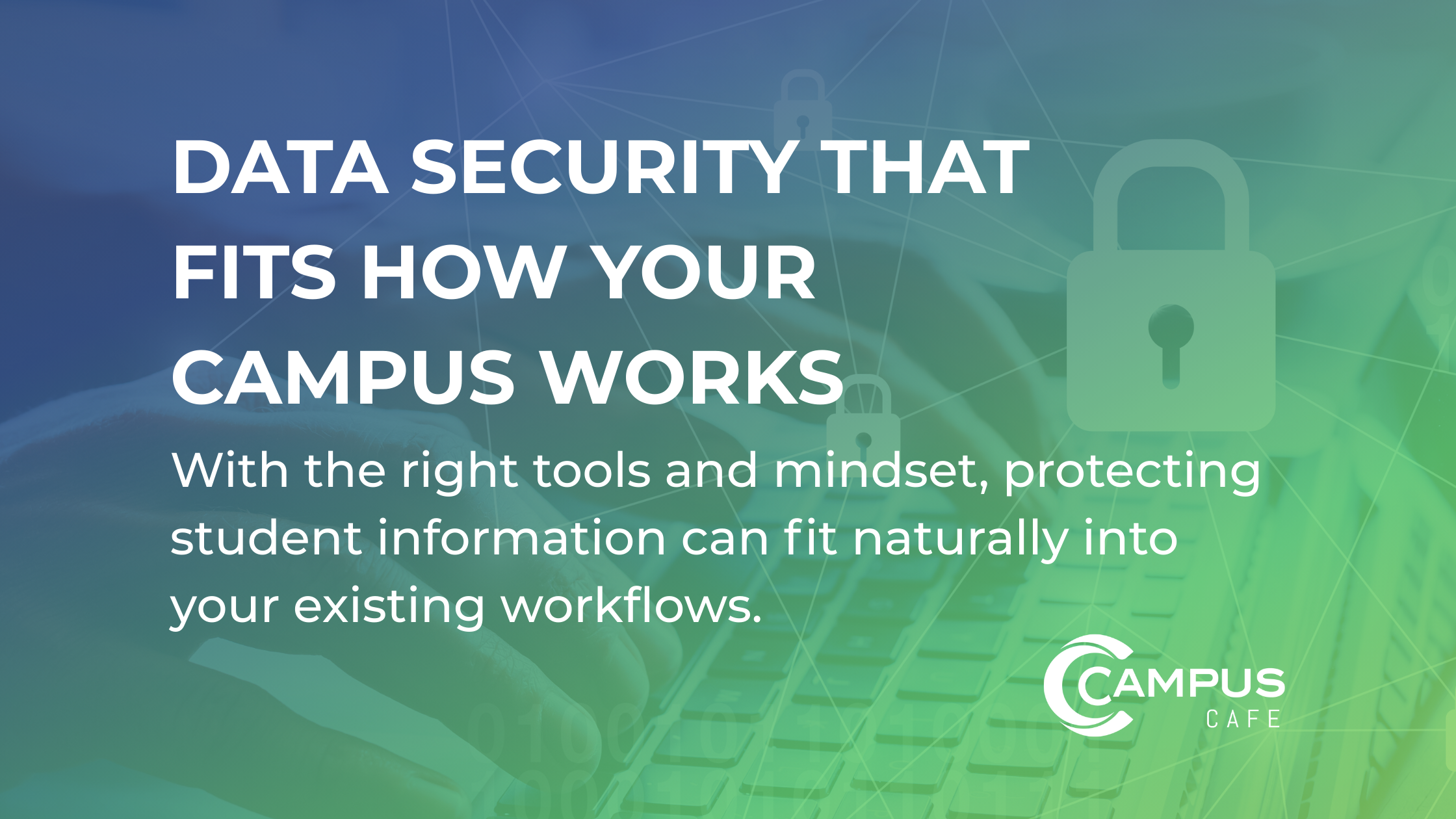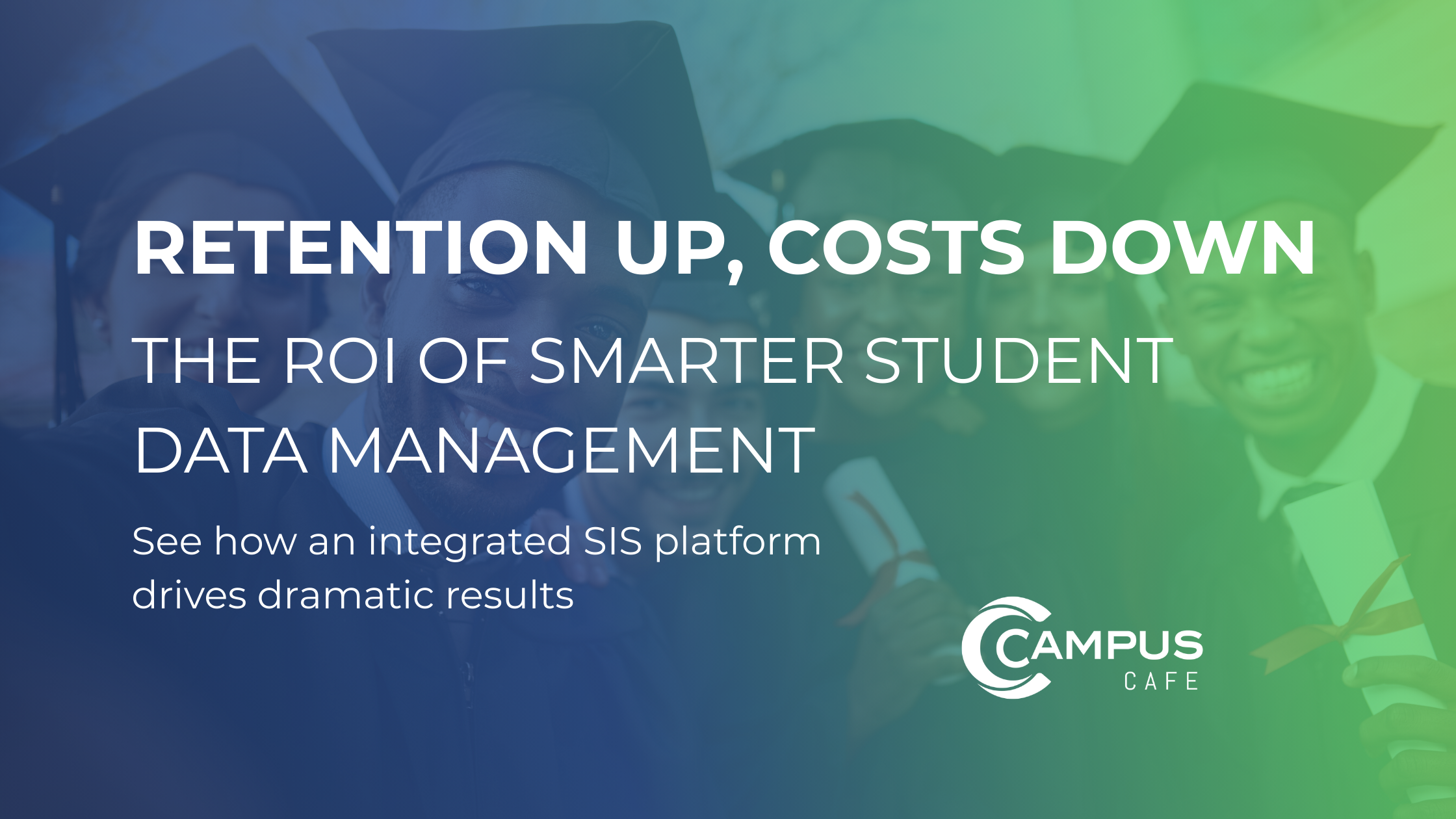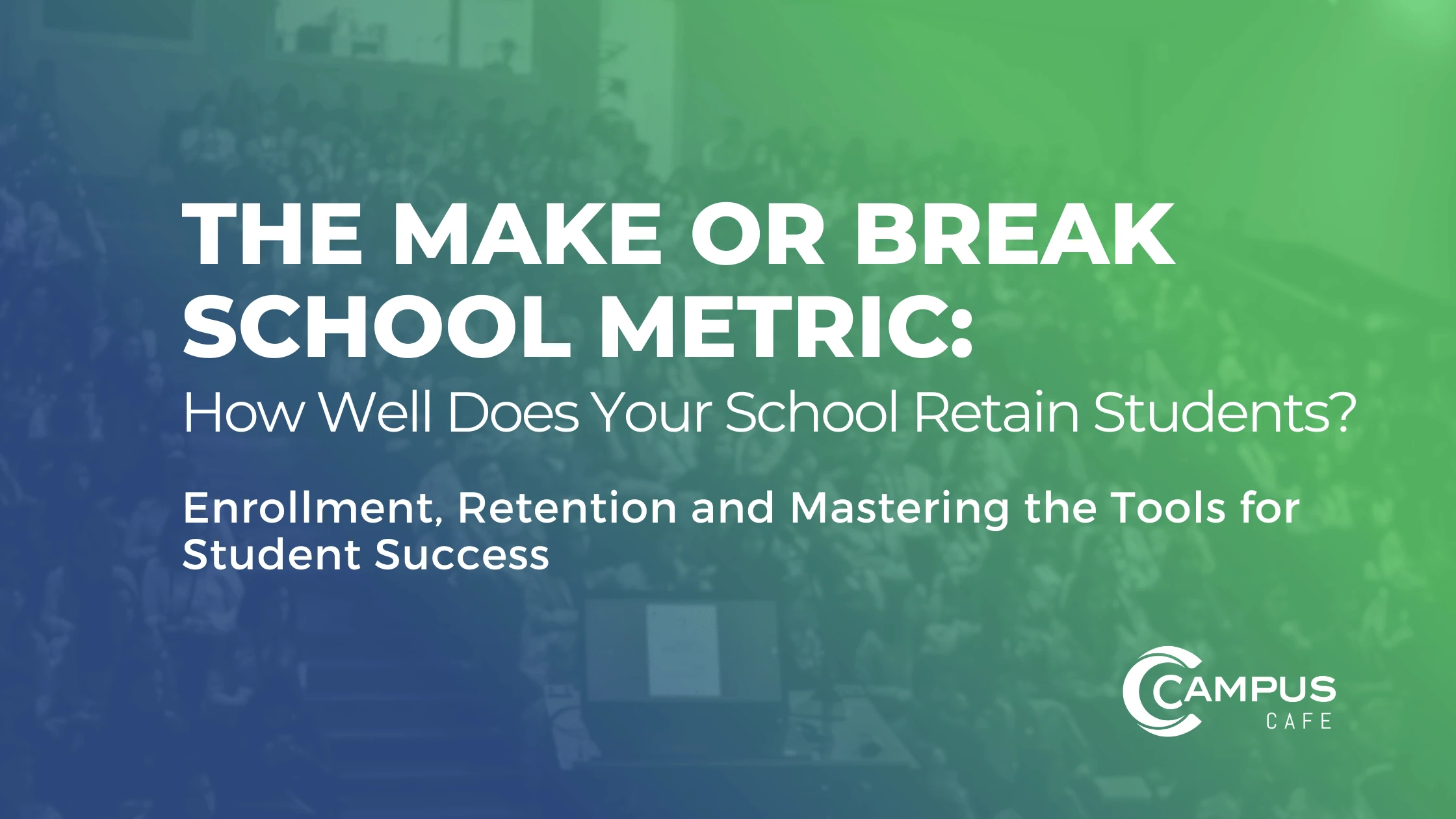Data security in higher ed builds trust, supports compliance, and improves enrollment through smarter, safer systems for student information.
Continue readingHow Smarter Student Data Management Delivers Real ROI for Your Institution
Smarter student data management delivers ROI. From operational efficiency to student retention, the results speak for itself.
Continue readingWhy Modern Colleges Are Moving Away from Spreadsheets: How Campus Cafe Eliminates Manual Work
In an era where students have access to cutting-edge technology, higher education staff and administrators should, too. Manual processes and spreadsheets belong in the past.
Continue readingHow a Student Information System Boosts Student Retention Rates
A modern student information system can help colleges and career schools boost student retention rates and support at-risk students.
Continue readingCampus Cafe Customer Community | Customer Resources
Campus Cafe’s Community is an online destination for our clients to interact with fellow higher-ed professionals, including Campus Cafe’s own experts and super users.
Continue readingComparing Campus Cafe and Ellucian Colleague: Student Information System Review
We explore how Campus Cafe’s student information system compares to Ellucian Colleague in key areas, like price, features, integrations and more.
Continue readingFinancial Value Transparency and Gainful Employment Rule Updates: What You Need to Know for 2025
Learn about the latest developments in the new Gainful Employment and Financial Value Transparency rules and what it means for schools.
Continue readingCampus Cafe vs. Ellucian PowerCampus: Which Student Information System is Right for Your Institution?
Discover why Campus Cafe’s student information system is a better solution than Ellucian PowerCampus for institutions with limited budgets and small staff.
Continue readingSIS SOS! Expert Solutions to Implementation Challenges
Campus Cafe has helped hundreds of schools implement our integrated student information system. We have the solutions and support to help you with navigating small bumps in the road to full-blown SIS emergencies.
Continue readingThe Roadmap for a Successful Data Migration
Implementing a new student information system can dramatically improve your school’s technology stack and data management practices.
Continue reading









